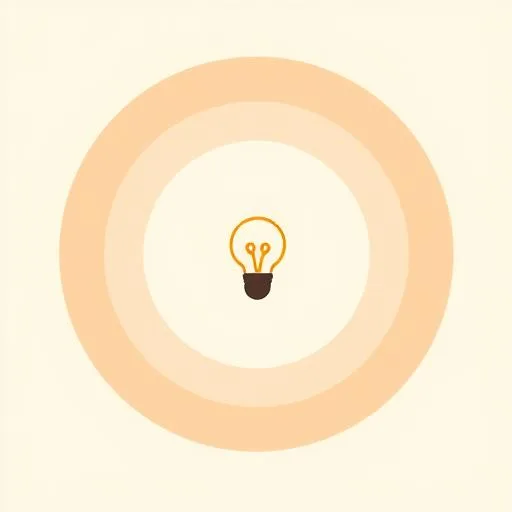
Ever feel like the AI buzz is drowning out the simple joy of discovery? While everyone scrambles to build chatbots that mimic human quirks, Perplexity CEO Aravind Srinivas quietly insists: the real magic happens when we spark curiosity, not imitation. Picture it—he’s not chasing the next flashy gimmick but asking how these tools can make us lean in, question deeper, and wonder aloud together. Now, that’s refreshing. Like watching your favorite park bench glow in golden-hour light, this perspective warms something fundamental in how we guide little ones through a pixel-filled world.
When AI Assistants Lose Their Spark

You remember Siri’s early days, right? Asking it to set a timer for “dinner” and getting a weather report instead—super helpful, thanks! Or Alexa spiraling into irrelevant tangents that left you wondering if your speaker had a secret life. The hard part, as Srinivas notes at HubSpot’s INBOUND conference, isn’t dreaming up assistants—it’s execution. These tools stumbled because they handed answers like takeaway boxes, wrapped tight with no room to explore. They missed the messy, beautiful truth: curiosity doesn’t end with an answer—it multiplies faster than kids asking “why” during bedtime stories!
When our kids get spoon-fed responses without context, we rob them of the thrill of the hunt. That tug-of-war between instant gratification and genuine learning? It’s exhausting, right?! It’s why we still find sticky notes with “Why?” scribbled in crayon stuck to the fridge like tiny curiosity bombs waiting to explode into family discussions.
Building Ladders, Not Walls

Now, here’s where it gets exciting! Perplexity’s secret sauce? It treats answers like stepping stones across a stream. Citing sources, nudging toward follow-up questions—it’s designed to say, “Curiosity doesn’t stop with an answer,” as Srinivas puts it. This mirrors how young minds actually grow—explosively and enthusiastically!
Research shows psychological curiosity enhances learning through exploration—it’s baked into human intelligence like kimchi into family dinner traditions. Imagine your seven-year-old tracing a leaf’s veins, then asking how trees drink water. Tools that invite deeper digging (“Let’s check what scientists say!”) turn passive scrolling into shared detective work. Suddenly, tech isn’t a barrier—it’s the bridge between “huh?” and “aha!” that lights up their faces brighter than morning sunshine through kitchen windows!
Raising Curious Humans in a Hype Machine

Let’s be real: the AI frenzy can make us paranoid, right? Will robots steal jobs? Should we ban screens before breakfast? Srinivas cuts through the noise by focusing on what lasts: nurturing how kids think, not just what they know. As a dad who’s seen both the excitement and overwhelm of parenting in the digital age, I get it—the pressure feels intense!
MIT researchers echo this—AI needs balanced curiosity to avoid distraction, just like kids in a room full of flashing toys. Our role? Be the calm in the storm. When my favorite snack jar rolls off the table (again!), I ask, “How could we catch it next time?” instead of sighing. Similarly, let’s frame AI as a playground for questions: “What if we used this to plan our next adventure?” rather than fearing it. Real resilience blooms when tools serve wonder—not the other way around. You know what I mean?
The Kitchen-Table Experiment

Try this: next time your child asks, “Why is the sky blue?” resist the urge to Google it immediately. Pause. Ask, “What do you think?” Let them guess wildly—maybe the ocean reflects or birds paint it hourly like nature’s own art project! Then, pull out a tool like Perplexity together and dive in like explorers discovering treasure.
Scan the cited sources: “Look, this book says it’s about sunlight bending!” Feel that? It’s the dopamine rush of discovery, not delivery—it’s absolutely electric! Google’s research nails why this sticks: curiosity thrives where feedback is sparse, mirroring real life’s unsolved puzzles. By turning answers into conversations, we teach that confusion isn’t failure—it’s the first step toward knowing.
And honestly? Those glorious, chaotic moments when muddy shoes and messy theories take over your kitchen?! They’re pure magic! They’re building brain pathways no algorithm can replicate, creating memories that’ll last longer than any device battery life.
The Quiet Revolution We’re Missing
Srinivas launched Perplexity just after ChatGPT exploded, betting that in a world screaming for human-like bots, the quiet power of curiosity would win. His journey whispers something vital for us parents: greatness isn’t in having all answers. It’s in the courage to stay curious—whether you’re a startup founder or a tired mom at 8 a.m. armed with cereal and hope!
Think about it: when screens dominate playdates, what if we asked not “How much tech is safe?” but “How does this spark joy or questions?” Like how my daughter switches between Korean and English when explaining her latest discovery – tech adapts just like she does!
Future-proofing kids isn’t about dodging AI—it’s raising humans who’ll wield it like explorers, not passengers. So next time hype hits hard, picture your child’s eyes lighting up as they connect dots you never saw. That’s the revolution worth betting on—and it’s going to be absolutely incredible!
Source: Perplexity CEO Says Curiosity, Not Hype, Will Shape AI’s Future, Forbes, 2025/09/05
